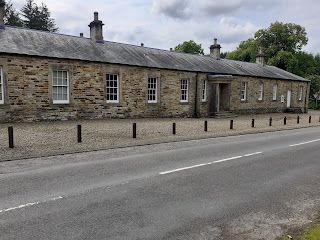A couple of years ago I purchased the complete 8 volume set of The Local Historian's Table Book by M.A.Richardson. It is an original 1840s affair, and is, well, quite literally falling apart at the seams (but it was cheap). The set is divided into two parts: 5 volumes of 'Historical' bits and bobs, and 3 volumes of 'Legendary' stuff. The former is full of interesting snippets, but I'd never bothered very much with the latter, until a few days ago...
In order to justify my impulsive purchase, I thought it about time that I cast my eyes over the first of the 'Legendary' volumes. I didn't expect to find much in the way of actual factual stuff, but was surprised to discover a good deal of interest. The most surprising was one of the first tales entitled The Man-Stealer Baffled: An Incident of Tynedale, which tells the story of the habitual "seizing by force [of] able bodied young men and sending them as slaves to the sugar plantations in the West India Islands." An example is given, being dated to a point in the early 1700s, which took place a little to the north of Corbridge. The 'man-stealer' was thankfully stopped in his tracks, I am pleased to say.
Here are images of the three pages in question. Click on the same to enlarge - hope you can make them out. The texts can also be found at Google Books and archive.org














_page-0001.jpg)




























